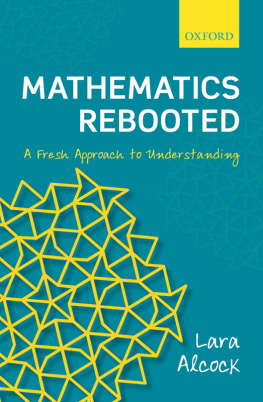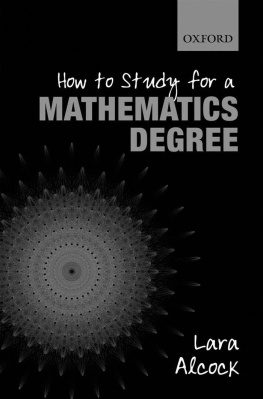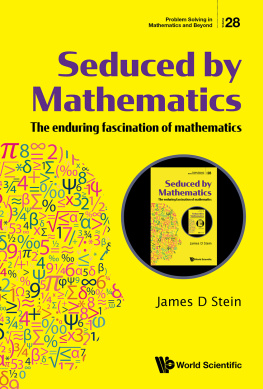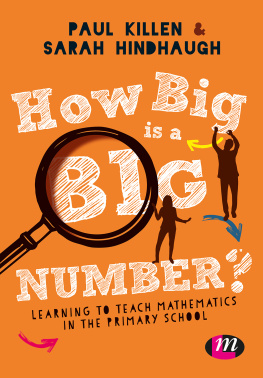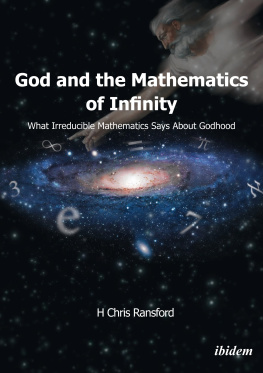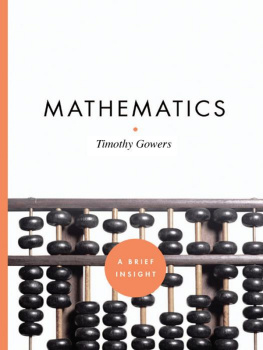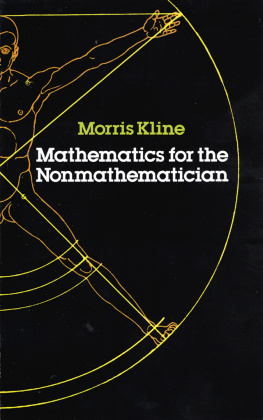
MATHEMATICS REBOOTED

Great Clarendon Street, Oxford, OX2 6DP, United Kingdom
Oxford University Press is a department of the University of Oxford. It furthers the Universitys objective of excellence in research, scholarship, and education by publishing worldwide. Oxford is a registered trade mark of Oxford University Press in the UK and in certain other countries
Lara Alcock 2017
The moral rights of the author have been asserted
First Edition published in 2017
Impression: 1
All rights reserved. No part of this publication may be reproduced, stored in a retrieval system, or transmitted, in any form or by any means, without the prior permission in writing of Oxford University Press, or as expressly permitted by law, by licence or under terms agreed with the appropriate reprographics rights organization. Enquiries concerning reproduction outside the scope of the above should be sent to the Rights Department, Oxford University Press, at the address above
You must not circulate this work in any other form and you must impose this same condition on any acquirer
Published in the United States of America by Oxford University Press 198 Madison Avenue, New York, NY 10016, United States of America
British Library Cataloguing in Publication Data
Data available
Library of Congress Control Number: 2017934732
ISBN 9780192525949
Printed and bound by
CPI Group (UK) Ltd, Croydon, CR0 4YY
Links to third party websites are provided by Oxford in good faith and for information only. Oxford disclaims any responsibility for the materials contained in any third party website referenced in this work.
PREFACE
What do adults choose to learn? Interests are personal, but many learn languages, or read about science, history, politics, economics, philosophy, or psychology. And many enjoy both classic and contemporary art, literature, plays, and films. Not everyone values these things equally, but many are proud to know at least a little about each. Ive written this book because I would like to see mathematics added to the list. Not because mathematics is a standard school subject, but because it is a cumulative intellectual endeavour with a long history and a wealth of clever and interesting ideas. I wouldnt expect a layperson to know many details or to have any idea about the cutting edge, but Id like more people to feel that they could speak confidently about key mathematical concepts and approaches to reasoning.
I got into a position to write this book by studying mathematics then mathematics education. Mathematics education as an academic discipline overlaps with mathematical cognition as a branch of psychology: both study ways in which people learn and think about mathematics. And research in these areas has revealed a lot. We know quite a bit about typical errors, misconceptions, and sources of confusion in children and in adults. We have good theories about how some of these arise, and were testing them with intervention studies designed to improve teaching and learning. Education is complicated, of courseanyone who has been in a class of 30 teenagers knows that intellectual development requires more than good lesson plans. But teachers and researchers know about numerous stumbling blocks in mathematical thinking, and they will recognize much of the content in this book.
That said, this is not a book about researchI use my knowledge about both mathematics and education in a more cavalier way than I would in academic writing. I explain why some ideas are naturally confusing, but this book is essentially an account of how I think about the subject. Like every teacher, my thinking is heavily influenced by my early experiences, and I do not try to hide thatI point out places in which I suspect that my way of understanding is idiosyncratic. But I dont include jokes, puns, or attempts to make mathematics interesting. In my view, there is no need to make mathematics interestingit is fascinating all by itself.
This book has multiple intended audiences, so readers with mathematical backgrounds will notice that sometimes, when I introduce an idea, I skate over the subtleties. Thats deliberate: I think it can be important to consolidate a simple version first. Sometimes the subtleties dont appear until considerably later in the book, so I hope that such readers will be patient. In particular, people who have studied higher level mathematics will have been told to be wary of intuition based on visual representations. That is sensible advice, and mathematicians offer it when they want students to question their assumptions and to justify their ideas within an established theory. Teaching disciplined reasoning within established theories is a valid aim, but its not mine in this book. My aim here is to communicate with nonspecialists about mathematical ideas. And I really like pictures, so I use them a lot, albeit discussing their limitations. Similarly, I start each main chapter with basic ideas, but I mean basic in an everyday rather than mathematically foundational sense.
Next page
